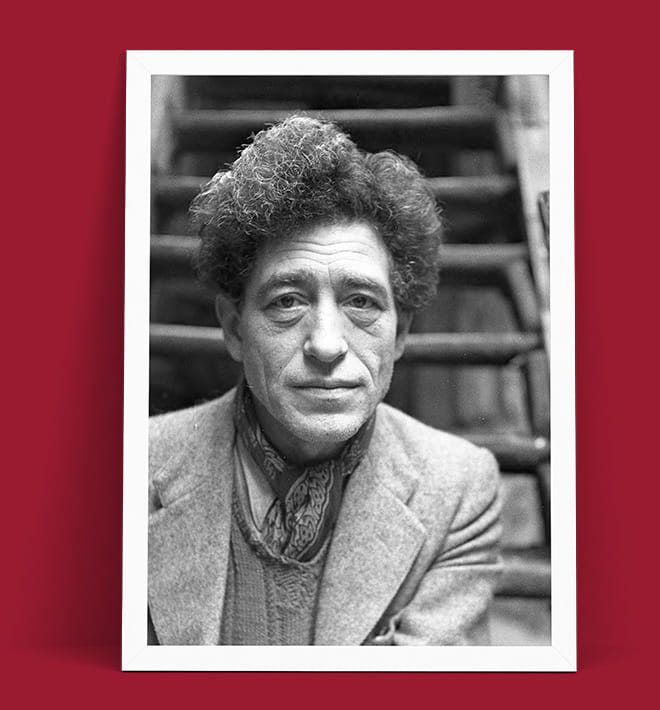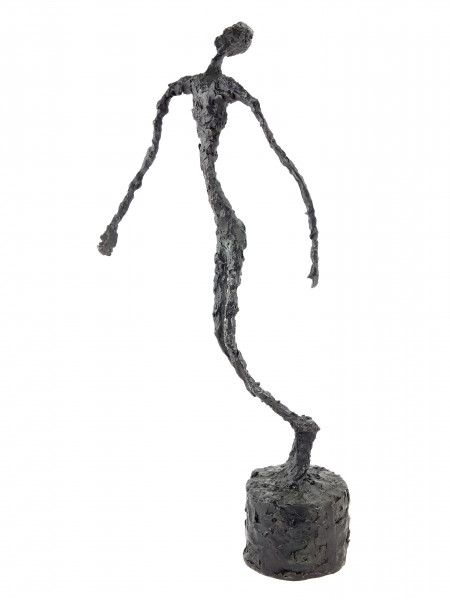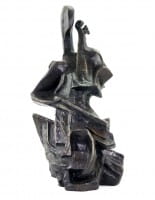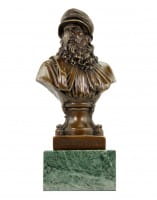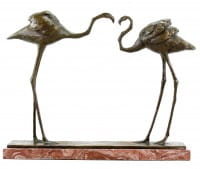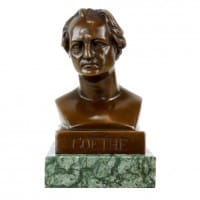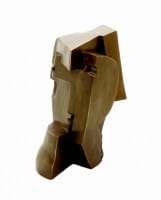Prices incl. VAT, free shipping worldwide
Ready to ship today,
Delivery time appr. 3-6 workdays










Product description
"Alberto Giacometti Sculptures - Homme qui chavire - Falling Man"
| Height | 60 cm |
| Width | 20 cm |
| Length | 20 cm |
| Weight | 4,8 kg |
Homme qui chavire – The Existential Fall of Man in Bronze - Signed Alberto Giacometti
Homme qui chavire, created around 1950, occupies a rare place in Alberto Giacometti Artwork. Unlike his stoic standing figures or resolute walking men, this sculpture captures a man in the act of losing control—an unanchored figure suspended between stability and surrender. It is not a fall in motion, but a fall in being. The figure’s arms reach backward and upward, the chest juts forward, and the thin, elongated legs curve into imbalance. He appears weightless, even as he is drawn downward. This ambiguous tension—between ascent and descent, grace and defeat—is central to the impact of this extraordinary work.
A Sculptor of Solitude and Presence
Alberto Giacometti was born on October 10, 1901, in the secluded Swiss village of Borgonovo in the Val Bregaglia. Raised in a family steeped in art—his father, Giovanni Giacometti, was a celebrated post-impressionist painter—Alberto was exposed early on to the world of visual expression. From the beginning, he was driven not by surface beauty but by the deeper question of how to represent human presence and perception. He moved to Paris in 1922 and became part of the great intellectual and artistic ferment of the century, ultimately carving a singular path that would forever change the language of modern sculpture. His body of work, now referred to collectively as Giacometti Art, is a timeless confrontation with the nature of existence.
Paris as Crucible of Form and Philosophy
The Montparnasse studio in which Giacometti worked for over forty years became more than a physical space—it was the crucible in which material, memory, and metaphysics fused into form. From this modest atelier, Alberto Giacometti created some of the most resonant sculptures of the twentieth century. His style, deeply influenced by existentialist thought and shaped by the trauma of war, gave birth to figures that were at once emaciated and monumental, fragile and eternal. Among the most emotionally charged and philosophically complex of all Giacometti Sculptures stands Homme qui chavire, translated as Falling Man.
Bronze as Eternal Witness
The sculpture, cast in bronze and signed A. Giacometti, radiates the same raw vitality found throughout Giacometti Sculptures. The surface is rough, irregular, and deeply expressive, retaining the marks of the sculptor’s relentless touch. Giacometti refused polish, rejected smooth perfection, and instead sought to preserve the immediacy of his perception. In Homme qui chavire, the bronze feels alive—alive with doubt, fragility, and fleeting clarity. The material becomes not merely a support but a vehicle for psychological truth.
The Fall as Human Condition
While Giacometti rarely provided explicit interpretations of his works, Homme qui chavire is often read as a metaphor for the human condition. It is a sculpture of loss and of transcendence, of the moment where the body no longer clings to certainty. But the fall here is not one of ruin—it is luminous, suspended, even sublime. The figure evokes mythological echoes of Icarus or Christ, yet stripped of narrative and anchored only in pure form. It belongs fully to the modern world, to the vocabulary of Giacometti Art, in which every movement is a question, and every posture a search for meaning.
Giacometti’s Unique Artistic Language
In contrast to the heroic realism of previous centuries, Alberto Giacometti created a sculptural idiom rooted in doubt, in perception, and in existential awareness. He once said that the more he looked at his subject, the further away it seemed to recede. This paradox became the engine of his art. In Falling Man, this receding is both literal and metaphorical—the figure is dissolving in space, yet profoundly present. He is alone, but universal. His fall is not dramatic, but suspended—silent, still, infinite.
A Body That Defies Gravity
What makes Homme qui chavire so haunting is its tension between physical vulnerability and metaphysical strength. The figure is reduced to a skeletal form, yet elevated to archetypal resonance. He teeters, yet he does not collapse. The fall becomes a state of being, a moment stretched to eternity. This ability to extract eternal meaning from fragile form is the hallmark of Alberto Giacometti Artwork, and it finds one of its most powerful expressions in this sculpture.
The Enduring Message of a Moment
Today, Falling Man speaks as clearly as it did at its creation. In an age marked by uncertainty and flux, the sculpture remains a poetic reflection of what it means to be human. It does not offer resolution, only recognition. Its power lies in its refusal to explain, its silent assertion of being. As part of the enduring corpus of Giacometti Art, this figure continues to inspire awe, reverence, and contemplation.
Between Earth and Sky
Homme qui chavire is not just a figure in descent—it is a sculpture in suspension. It captures the liminal state between ground and flight, between materiality and dissolution. In this precarious balance lies Giacometti’s genius: the ability to make bronze feel lighter than air, to give doubt a form, to let a single human body speak for all of us. Among the pantheon of Alberto Giacometti Artwork, this is one of the most eloquent expressions of fall as grace, of motion as stillness, of failure as the most luminous form of being.
Our advantages
free shipping
Worldwide free shipping
14 days money back
You can cancel your order
within 14 days
secure payment services
Paypal, Master Card, Visa, American Express and more

